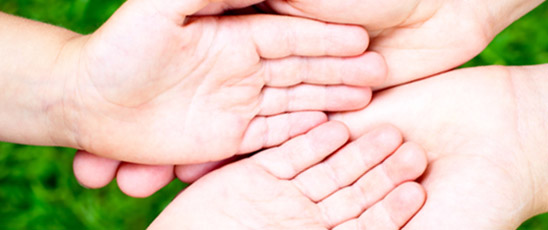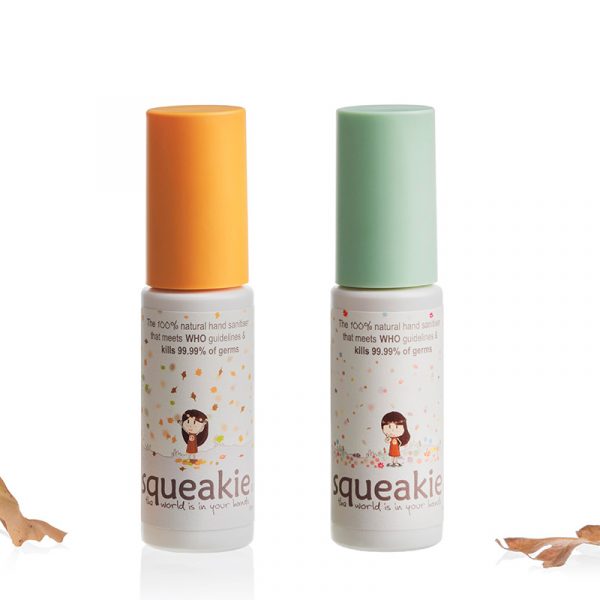
Not all hand sanitisers are created equal. The 7 traps to avoid.
August 1, 2014Hand sanitisers are a fantastic way to keep your hands clean on the go but not all hand sanitisers are created equal. Ignore all the claims on the label and flip to the ingredients list to really find out what your hand sanitiser is all about. What is the antibacterial agent that is killing the 99.99% of germs?
1. “ALCOHOL FREE”. Does the ingredients list contain Benzalkonium Chloride or Triclosan? Not good. The Environmental Working Group in the US (EWG), the leading organisation that researches the safety of ingredients in personal care and cosmetics, advises against the use of Benzalkonium Chloride and Triclosan antibacterial products because studies have shown that their use may lead to bacterial resistance. The synthetic pesticide Triclosan is also suspected to alter regular hormone function in our bodies and Benzalkonium Chloride according to the EWG, is a sensitizer and of particular concern for people with asthma or skin conditions like eczema. The World Health Organsistaion (WHO) and the Centres of Disease Control (CDC) do not recommend alcohol free hand sanitisers.
2. “KID FRIENDLY”. Flip to the ingredients on the back and you’re likely to find either Benzalkonium Chloride or Triclosan, both of which are suspected of bacterial resistance. See above.
3. “LONG LASTING PROTECTION”. Prolonged exposure of bugs to low concentrations of antimicrobials is the textbook way of breeding resistance. In a recent UK study, when scientists increasingly added a benzalkonium chloride solution to the common bacteria pseudomonas aeruginosa, the bacteria learned how to survive. The bacteria also became able to withstand a common antibiotic. “Long lasting protection” hand sanitisers and wipes leave a residue on your skin for hours afterwards that give bacteria a chance to mutate and form resistance. The opposite effect of what you’re trying to achieve. The CDC reports that the concern is irrelevant with (germ-killing) substances that do not leave residues i.e. alcohol.
4.“NATURAL”- if the label reads natural, flip to the ingredients list to see what the ingredient is that is killing the germs? And does the list tell you how much of that natural antibacterial agent is in the formula? Have independent lab studies shown this natural ingredient kills 99.99% of germs when it’s diluted down to 1% or less in a hand sanitiser? Does the ingredients list show that the bulk of the formula is mainly synthetic or petro chemically derived with a token natural ingredient(s) thrown in? Does the product contain fragrance or fake colours that are meant to make the formula look and smell natural?
5. WHAT KIND OF ALCOHOL HAND SANITISER IS IT? Alcohol based hand sanitisers (with at least 60% alcohol) are the only hand sanitisers that are recommended by the WHO, CDC and EWG. Make sure the ingredient list states how much alcohol is in the formula, because 60% alcohol is essential for an effective hand sanitiser. Less than that won’t kill 99.99% of germs. Also have a look to see if fossil fuel derived, highly drying alcohol (isopropyl alcohol, n propanol) has been used and/or the ethanol is denatured. If it has been denatured, the toxic denaturant chemicals like methanol, phthalates or acetone won’t be listed on the label. You’ll find with these kind of hand sanitisers, when you use them before eating food with your hands, food will taste bitter. Also check what and how many moisturising agents are included on the ingredient list. Is the formula mainly synthetic and petroleum derived? Does it include PEGS that are suspected of containing carcinogenic contaminants? Also watch out for the hand sanitisers on the market that say they kill 99.99% of germs but their alcohol level is only around 30 to 40%.
6. “FRAGRANCE” or “PERFUME” –The EWG have estimated that on average about 14 chemicals will be hiding behind this catch-all term. The EWG has estimated that about 10 of those chemicals will be sensitizing chemicals associated with allergic reactions such as asthma, wheezing, headaches and contact dermatitis and about 4 suspected hormone disrupting chemicals including phthalates (that make the smell last longer) and that the artificial musks incorporated in “fragrance” and “perfume” bio accumulate in our bodies. Avoid products with “fragrance” or “perfume” listed on the label. Choose companies that are upfront about what’s in the bottle and list all ingredients on the label.
7. PRETTY COLOURS. The hand sanitiser is pink, blue, green, cream or evokes a natural ingredient. Is this colour natural or is it synthetically derived from petroleum or coal tar sources? According to the FDA in the US, certified colours additives are derived primarily from petroleum and are sometimes known as “coal-tar dyes” or “synthetic” colors.
Avoid the above 7 traps and be squeakie. squeakie is the 100% natural hand sanitiser with ZERO nasty chemicals suspected of being hormone disruptors, leading to bacterial resistance, or containing carcinogenic contaminants. Squeakie’s 62% pure milk whey alcohol removes 99.99% of germs and our 4 all natural miracle moisturisers- bladderwrack extract, rosehip oil, aloe vera and vegetable glycerine give your hands some serious love. No animal testing, BPA free, recyclable bottle, in a 100% recycled box with 10% of profits going to causes that need a helping hand…squeakie is kind to you, kind to others and kind to the planet. Enjoy squeakie clean hands in 20 seconds…
squeakie.com.au/shop
of kindess, inspiration & health
buy squeakie
Our Squeakie Kindness Kit includes 2 x Squeakie 50ml bottles. One for you and one for a friend. Kindness can change the world.



